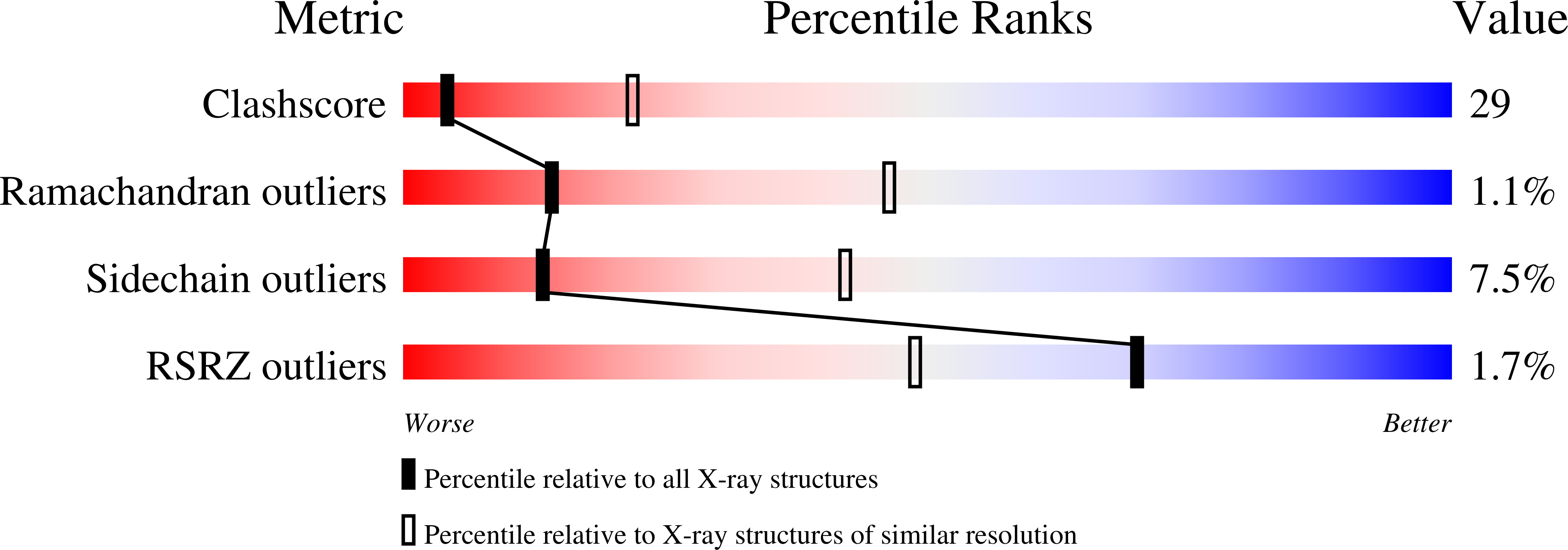The Structure of Bovine F1-ATPase Complexed with the Peptide Antibiotic Efrapeptin.
Abrahams, J.P., Buchanan, S.K., Van Raaij, M.J., Fearnley, I.M., Leslie, A.G., Walker, J.E.(1996) Proc Natl Acad Sci U S A 93: 9420
- PubMed: 8790345
- DOI: https://doi.org/10.1073/pnas.93.18.9420
- Primary Citation of Related Structures:
1EFR - PubMed Abstract:
In the previously determined structure of mitochondrial F1-ATPase determined with crystals grown in the presence of adenylyl-imidodiphosphate (AMP-PNP) and ADP, the three catalytic beta-subunits have different conformations and nucleotide occupancies. AMP-PNP and ADP are bound to subunits beta TP and beta DP, respectively, and the third beta-subunit (beta E) has no bound nucleotide. The efrapeptins are a closely related family of modified linear peptides containing 15 amino acids that inhibit both ATP synthesis and hydrolysis by binding to the F1 catalytic domain of F1F0-ATP synthase. In crystals of F1-ATPase grown in the presence of both nucleotides and inhibitor, efrapeptin is bound to a unique site in the central cavity of the enzyme. Its binding is associated with small structural changes in side chains of F1-ATPase around the binding pocket. Efrapeptin makes hydrophobic contacts with the alpha-helical structure in the gamma-subunit, which traverses the cavity, and with subunit beta E and the two adjacent alpha-subunits. Two intermolecular hydrogen bonds could also form. Intramolecular hydrogen bonds probably help to stabilize efrapeptin's two domains (residues 1-6 and 9-15, respectively), which are connected by a flexible region (beta Ala-7 and Gly-8). Efrapeptin appears to inhibit F1-ATPase by blocking the conversion of subunit beta E to a nucleotide binding conformation, as would be required by an enzyme mechanism involving cyclic interconversion of catalytic sites.
Organizational Affiliation:
Medical Research Council Laboratory of Molecular Biology, Cambridge, United Kingdom.






















